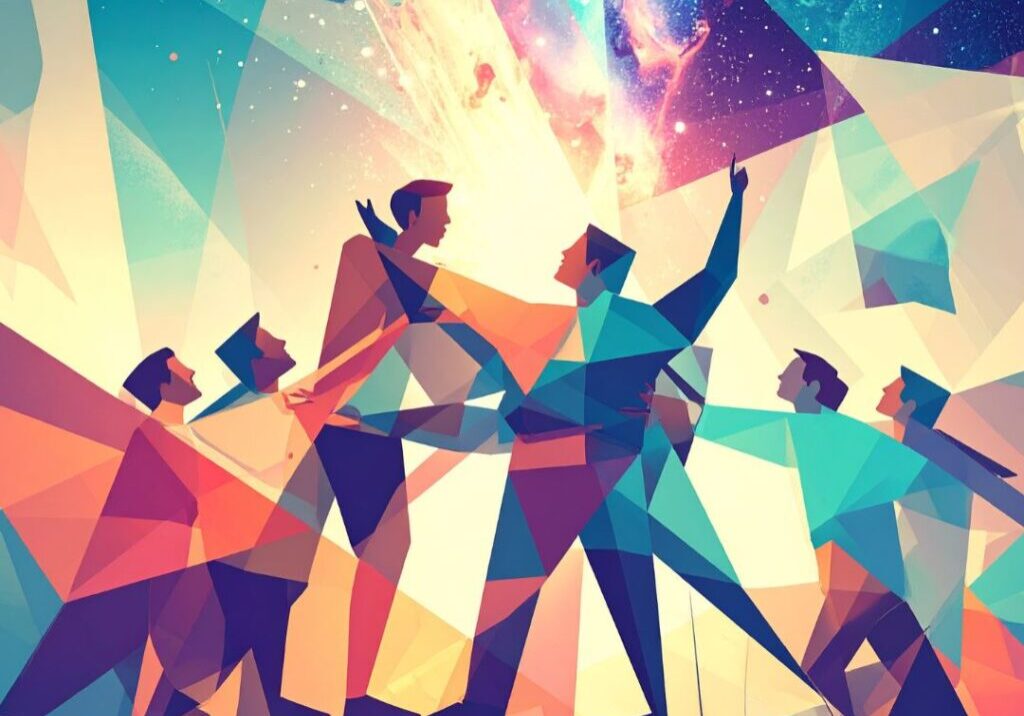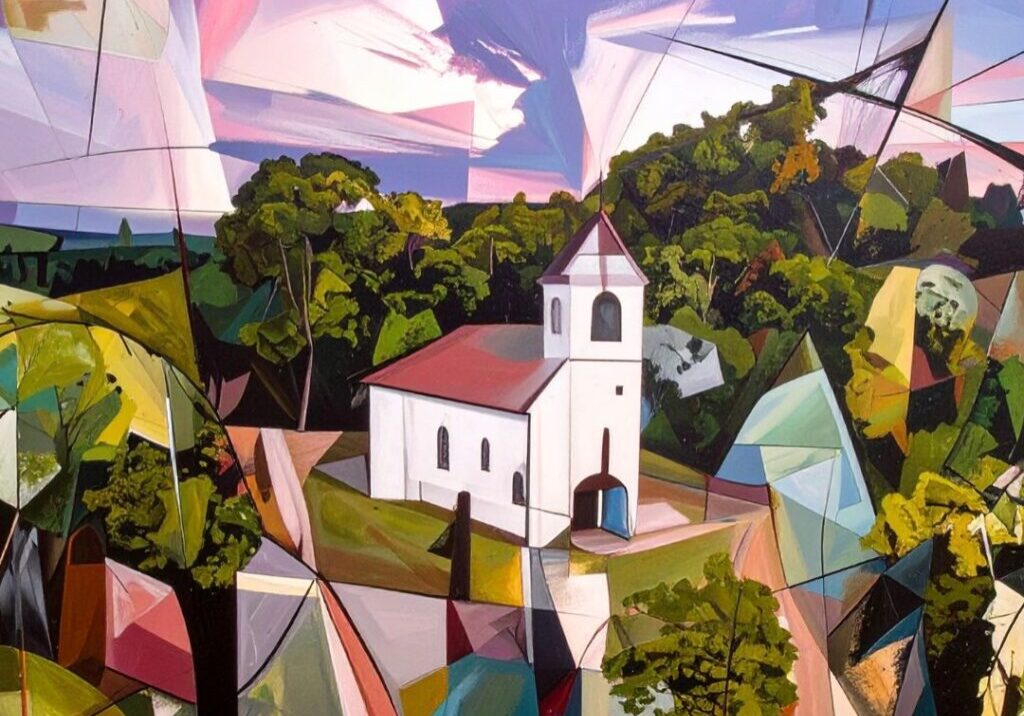Bridging The Gap Between Science And Religion
Several years ago, Woodstock Theological Center initiated a core research area in Science and Religion. Many people inquired about the purpose of this research, particularly because Science and Religion are two entirely different disciplines. They asked, what does Science have in common with Religion and vice versa? The simplest answer is the world. Science and Religion are the two most powerful forces that shape our understanding of self and world. My purpose here is to illuminate why Science and Religion (that is, Theology) need each other and why research in this area is of utmost importance today.
If we begin with our present experience of the world, we quickly realize that we are immersed in a scientific-technological culture. Twentieth century scientific discoveries in cosmology, physics, biology, and biomedical sciences have rendered a whole new understanding of cosmic and biological life. In less than two hundred years, we have moved from a closed, static, hierarchical universe of absolute space and time to an open, dynamic, evolutionary, 13.7 billion old universe of relative space-time; from analytical causal systems to contextual open systems; from order and equilibrium to chaos and non-linear systems; from cause and effect to quantum entanglement. Added to these scientific achievements is the ascent of various technologies including artificial intelligence, robotics, synthetic biology and nanotechnology. According to Moore’s law, technology is accelerating at an exponential rate.  The cell phone is a good example of technology’s rapid advance; once an aid to human communication, it is now a minicomputer and multi-media center in the palm of one’s hand. While science and technology continue to develop exponentially, religion remains a private matter, based on dogmatic principles and infallible truths. Theology still functions against the background of the medieval three-tiered universe with God at the top of the hierarchy, earth in the center (though fallen due to sin) and hell as the place for the damned. How did the two most important forces in our lives become radically separated?
The cell phone is a good example of technology’s rapid advance; once an aid to human communication, it is now a minicomputer and multi-media center in the palm of one’s hand. While science and technology continue to develop exponentially, religion remains a private matter, based on dogmatic principles and infallible truths. Theology still functions against the background of the medieval three-tiered universe with God at the top of the hierarchy, earth in the center (though fallen due to sin) and hell as the place for the damned. How did the two most important forces in our lives become radically separated?
A Brief History of Science and Religion
If we turn back the hands of time to the first thousand years of Christianity, we find a very different picture. It is no coincidence that science sprang, not from Ionian metaphysics, not from the Brahmin-Buddhist-Taoist East, not from the Egyptian-Mayan astrological South, but from the heart of the Christian West. Historically, the foundations of modern science are found in the Judeo-Christian tradition, beginning with the Old Testament and its emphasis on an orderly, rational, and contingent world. In the New Testament the life, death, and resurrection of Jesus Christ underscore the openness of matter to spirit and the presence of God in creation. Patristic writers such as Saint Augustine encouraged study of the natural world. Creation bore the footprints (vestigia) of God and understanding the natural world (scientia) could help deepen one’s faith. The influence of Greek philosophy on Christian theology peaked in the Middle Ages where Aristotelian cosmology was joined to Christian theology in the brilliant synthesis of Thomas Aquinas. Thomas studied logic, natural philosophy, arithmetic, geometry, and astronomy in addition to theology, which was known as the queen of sciences. To know God (religion) was to know the world created by God (science, from the Latin scientia or knowledge). Creation was considered to be the first book of God’s self revelation, followed by Scripture. Science was necessary for theology because a mistake about creation could lead to a mistake about God.
The first major rift between science and religion came when Nicholas of Cusa and later Nicholas Copernicus proposed a theory of heliocentrism which meant the earth revolved around the sun. Up to this time the earth was considered to be the center of a stable cosmic order and the human person, created in the image of God, was at the center of the earth. The Church, however, was not ready for the major upheaval of a moving earth. If the earth moved around the sun then the human person was no longer center of the cosmos but simply part of a spinning planet. How could this finding be reconciled with the Genesis account where the human person was created on the sixth day in God’s image? How would sin and salvation be understood? Galileo argued that the Bible and the natural world both come from God and are meant to be in harmony. Cardinal Baronius remarked that the Bible teaches “how to go to heaven, not how the heavens go.” Once the theory of heliocentrism became the law of the planets, the Church found itself in a vulnerable position with regard to science. The rise of modern science, following the Protestant Reformation and its emphasis on sin and personal salvation, caused an alienation from the earth in both Catholic and Protestant circles. Science became detached from its Christian roots, rising as a self-sufficient discipline to explain natural causes and events.
The resistance of the Church (indeed, all world religions) to modern science and the loss of human centrality in creation spawned a radical empiricism and a milieu for scientific materialism to emerge. The Jesuit trained philosopher Rene Descartes tried to preserve God from the clutches of a changing world by locating true knowledge not in creation but in the self-thinking subject. While up to and through the Middle Ages, creation was a source of revelation and knowledge of God, Descartes’ separation of matter and spirit shifted the locus of knowledge to the individual human being in his or her personal subjectivity. The transcendent One (or principle of unity associated with the name “God”) became identified with the immanent subject. Whereas in the Middle Ages the power to unify the many came from the one God who created heaven and earth, in the Enlightenment the power to unify the many was sought in the individual. The changing scientific world view threw the God of Jesus Christ into doubt and disbelief. This transition of knowledge from object to subject imposed a burden on the human person to make sense of the world by rational thought alone. As the new science story emerged between the seventeenth and twentieth centuries, the human person was not part of the cosmic story. In Newton’s world, the sovereign, omnipotent God governed the world from above and the cosmos ran like a machine according to internal laws and mechanisms. Whereas the ancient universe gave the human person a special role in creation as image of God, the world of modern science subsumed the human person into the dazzling world of scientific data. Essentially, nature was stripped of its sacred character.
 As the cosmos assumed a new world picture through modern science, religion remained tied to the medieval cosmos. The marriage of Greek metaphysics to Christianity gave rise to a system of God, humanity, and creation that was too neat and orderly to be disrupted. Christian doctrine was inscribed within the framework of a perfect, immutable, hierarchical, and anthropocentric order. The widening gap between theology and cosmology relegated religion to a set of abstract, speculative ideas on fixed principles, while science opened up to a world of dynamic change. A religion built on stability and immutability could not be prepared for a cosmic order based on change, as John Haught has shown. Thus it is no surprise that Darwin’s theory of evolution in the nineteenth century was seen as a “dangerous idea” because it too was a science of change and seemed to dispense with the need for God.
As the cosmos assumed a new world picture through modern science, religion remained tied to the medieval cosmos. The marriage of Greek metaphysics to Christianity gave rise to a system of God, humanity, and creation that was too neat and orderly to be disrupted. Christian doctrine was inscribed within the framework of a perfect, immutable, hierarchical, and anthropocentric order. The widening gap between theology and cosmology relegated religion to a set of abstract, speculative ideas on fixed principles, while science opened up to a world of dynamic change. A religion built on stability and immutability could not be prepared for a cosmic order based on change, as John Haught has shown. Thus it is no surprise that Darwin’s theory of evolution in the nineteenth century was seen as a “dangerous idea” because it too was a science of change and seemed to dispense with the need for God.
The Rise of Science and Religion as a Discipline
The area of Science and Religion emerged in mid-twentieth century as scientists, theologians, and philosophers began to grapple with the insights of modern science, especially evolution and quantum physics. New understandings about the origin of the universe, space-time, mass-energy, and consciousness among others provided wonderful and amazing insights about reality but also raised new questions that science alone could not answer. What is the purpose of created life? Where is this universe going? Why does intelligent, sentient life evolve? The modern dialogue between religion and science is rooted in Ian Barbour’s 1966 book Issues in Science and Religion where Barbour developed a four-fold scheme to help make sense of the relationship between Science and Religion. These four levels are: conflict – science and religion contradict and are incompatible with each other; independence – science and religion are separate realms of inquiry; dialogue – both science and religion have things to say to each other about phenomena in which their interests overlap; and integration which aims to unify science and religion into a single discourse.
The level of discourse most suited to cosmic evolution or moving forward as a whole, is integration. How can the insights of science be harmonized or find compatibility with religious faith? How can science and religion form a unified vision of our world? These are critical questions that are not supported by our educational system, which treats Science and Religion as antithetical disciplines and not two ways of understanding the world of reality. According to a recent Gallup poll less than forty percent of the public are familiar with the basics of modern science. To the popular mind, science is completely inimical to religion: science embraces facts and evidence while religion professes blind faith. However, modern science is not only compatible with Christianity; it finds its origins in Christianity. The Bible is not a science textbook that contains raw scientific truths but reveals insights to the mystery of God. The Christian faith contains deep truths with philosophical consequences that make conceivable the mind’s exploration of nature, including the human’s place in creation, the revealing nature of God, and the ways in which God freely creates. The cosmos and the laws which govern it do not form a self-explanatory system; they point beyond science and call for a metaphysical foundation, that is, a deeper philosophical and theological foundation that can address questions of ultimate meaning and value. Religion speaks to us of the intelligibility of the universe, of its fruitfulness for life and its persuasive account of ethical and aesthetic perceptions. Religion can articulate what science cannot grasp, the aim and purpose of an evolutionary universe; a cosmic order which anticipates a future fulfillment. A world without religion finds it hard to explain how “something of lasting significance is glimpsed in the beauty of the natural world and the beauty of the fruits of human creativity,” as John Polkinghorne writes. However, contemporary science challenges us to widen our beliefs, not to become rigidly fixed in them. It inspires us to awaken to something more awesome and deep at the heart of created reality. Science needs religion because theism makes more sense of the world and of human experience than science alone but religion needs science to prevent it from falling into idolatry and worship of false absolutes. Science cannot prove the existence of God and Religion cannot prove the existence of quarks but scientific discoveries can ignite “questions of the more” that religion alone can address.
The late Pope John Paul II recognized the need for mutuality between Science and Religion. Openness to the modern sciences, John Paul said, can help the Church remain on the path of truth and not wander off into error and superstition. On the occasion of Einstein’s centenary birth, the Pope commended Einstein’s contribution to the progress of science and encouraged theologians to consider his insights for a deeper understanding of truth: “Filled with admiration for the genius of the great scientist, in whom is revealed the imprint of the creative spirit, without intervening in any way with a judgment on the doctrines concerning the great systems of the universe, which is not in her power to make, the Church nevertheless recommends these doctrines for consideration by theologians in order to discover the harmony that exist between scientific truth and revealed truth” (Science, 1980). The Vatican remains open to the dialogue between Science and Religion and has instituted a new department to promote harmony and understanding between scientific discoveries and matters of faith. We must give reason for the hope that lies within us and such reason can be illuminated by true knowledge of created reality, as science discloses it.
Science and Religion stand in awe in the face of the mystery that is our world and the even greater mystery of God to which the world points. With the amazing discoveries today in big bang cosmology, evolution, and quantum physics we must ask, how big a God do we believe in? Both Science and Religion point to the fundamental incompleteness of created reality and a basic openness to a level of completion which does not now exist. The gnawing questions that linger in the human heart today, questions of lasting values, moral decisions, and life’s direction are questions that cannot be answered by science alone. If Aquinas was able to construct a new theology using Aristotelian categories to speak to a world imbued with Aristotelian science, is it possible for contemporary theologians to do the same in dialogue with modern science? That is our hope at Woodstock and the aim of what we seek to do.
 View print-friendly version
View print-friendly version
1 Comments
Related Posts

Mission for an Evolutionary Christianity
We are living through tumultuous times. Political polarization intensifies, violence against vulnerable populations escalates, and the foundational principles of human dignity face erosion. For many, the cognitive dissonance between professed…


What is needed for a human being to stop, observe, wonder, and question? We can look at the study of religion/God and can look at the study of science, as subjects in a college curriculum. But what does it mean to the individual human being? How many people who reproduce ever wonder about the biological dance of reproduction? How many people are lost in the worlds of different cultures, never looking beyond their own culture to see the Creation? Ilia, you talk about the importance of thinking, and I do see the importance of thinking as a step in evolution, but the “material of one’s thought” may be little more then a response to another thought. We are so tied into our bodies. Descartes tried to separate the body from the brain, Spinoza did not; however, Descartes seemed to have had a bigger impact on philosophy then Spinoza, at least in fostering dualism which is so alive today. Yet today’s neuroscience shows that the individual is intimately tied into the biological make up of his or her body. Science and religion, at times, seem to be “out there”. The “God” of one may not be the “God” of another. Does one really need a “God”? In my high school yearbook I quoted some author, shame on me for not remembering who, but I remember the saying, “If God did not exist, man who have to create One.” What is the big question? Is the big question, “Is there a God?” Do we need to define God? For me the big fear question is, “Is my life meaningless?” Is it just a product of billions of years of attracting atoms and molecules which have combined together to make a me, which lasts for a very short period of time as an isolated being. A unified gathering of billions of cells interacting with one another to make a “one”, lasting a brief moment together. I think what you have to offer Ilia is an answer to the question. That we are part of a God who at the very center is love creating and evolving the always present now, with and without the “little me”. But we are at the center of this creation of Love. And yet this is thinking again, whether correct or not in its presumptions. Maybe, in the end, we just let God be God, this love uniting energy, matter, and spirit. Maybe the only important thing for me to do is to live the life that has been given me, and at the end of the day, before I rest, pray: thank you God for the gift of life. I love You. Be it done to me according to your will. Then wake up the next morning and be part of the Creation. As you would say, be a “whole maker”.